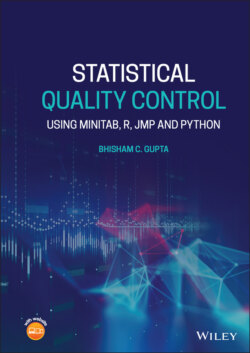Читать книгу Statistical Quality Control - Bhisham C. Gupta - Страница 33
1.3.2.4 Eliminating Productivity Quotas
ОглавлениеNumerical quotas for hourly workers to measure work standards have been a common practice in America. This is done by the Human Resources (HR) department to estimate the workforce that the company needs to manufacture X number of parts. While doing these estimates, it could be that nobody bothers to check how many of the manufactured parts that have been produced are defective, or how many of them meet the specifications set by customers or will be rejected/returned. HR normally does not take into account the cost of such events – which, of course, the company has to bear because of rework on defective or nonconforming parts or rejected and trashed parts. All of this adds to the final cost.
In setting up numerical quotas, the average number of parts produced by each worker is often set as a work standard. When we take an average, some workers produce a smaller number of parts than the set standard, and some produce more than the set standard. No consideration is given, while setting the standard, to who produced a small or large number of parts that meet customer specifications. Thus, in this process, workers who produce more parts than the set standard – regardless of whether the parts meet the specifications – are rewarded, while other workers are punished (no raises, no overtime, etc.). This creates differences between workers and, consequently, chaos and dissatisfaction among workers. The result is bad workmanship and more turnover, and workers are unable to take the pride in their workmanship to which they are entitled.
